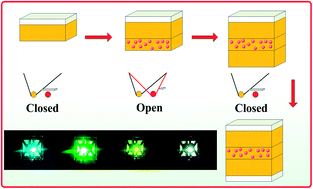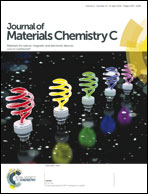Highly efficient single-layer organic light-emitting devices based on a bipolar pyrazine/carbazole hybrid host material†
Abstract
Organic light-emitting diodes (OLEDs) have attracted tremendous interest and have already become a prevalent technology in MP3 players, smartphones and cameras. In response to the calls for the large-scale application of OLEDs, the complicated and costly processes for preparing a device is a major challenge which should be addressed. Herein, a novel bipolar host material, 26PyzCz, which contains a pyrazine/carbazole hybrid, has been designed and synthesized. 26PyzCz-based single-layer (SL) fluorescent (F)–phosphorescent (P) OLEDs with various colors have been successfully fabricated. Green and orange SL phosphorescent OLEDs (PHOLEDs) have exhibited efficiencies as high as 63.3 and 62.1 cd A−1 at 1000 cd m−2, and 55.7 and 53.8 cd A−1 at 10 000 cd m−2, respectively. Meanwhile, a SL warm white OLED based on fluorescent blue and phosphorescent orange has demonstrated excellent performance, with a maximum current efficiency of 27.5 cd A−1 and a maximum power efficiency of 21.6 lm W−1. In addition, the charge carrier behavior have been evaluated by impedance spectroscopy, which revealed that the dopant trapping effect plays a critical role in charge balance and exciton generation in the SL PHOLEDs.


 Please wait while we load your content...
Please wait while we load your content...